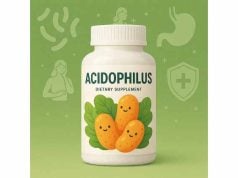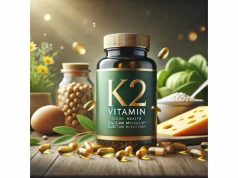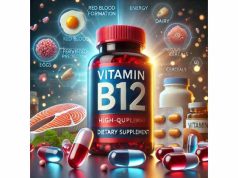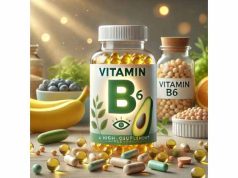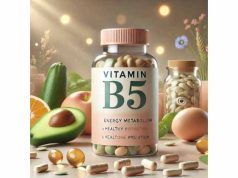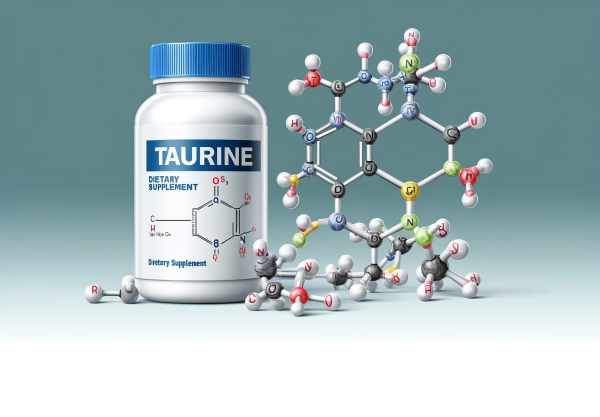
Taurine, a naturally occurring amino acid-like compound, has drawn increasing attention for its potential to strengthen and preserve vision. While often recognized for its role in energy drinks and athletic performance, taurine is also a noteworthy ally in eye health. It is found in high concentrations in the retina, where it helps protect delicate cells from oxidative damage and supports overall retinal function. Emerging evidence points to taurine’s possible impact on mitigating age-related vision challenges and promoting more resilient eyesight. If you are looking for a safe, scientifically grounded approach to vision improvement, understanding the role of taurine can be a key step toward clearer, healthier eyes.
Table of Contents
- The Nature of Taurine and Its Origins
- Ways in Which Taurine Supports Improved Vision
- Distinct Advantages of Taurine for Eye Vitality
- Using Taurine Effectively for Optimal Visual Benefits
- Breakdown of Scientific Studies and Insights
- Frequently Asked Questions
- References and Sources
The Nature of Taurine and Its Origins
Taurine is an organic compound often classified as a conditional amino acid, meaning the body can produce it from other nutrients, although not always in optimal amounts for every scenario. It was first isolated from ox bile—hence the name “taurine,” derived from the Latin word taurus for bull or ox. Today, scientists recognize taurine as essential in various physiological systems, including the cardiovascular system, nervous system, and, crucially for our topic, the visual system.
Where Does Taurine Come From?
You can obtain taurine from multiple dietary sources:
- Meat, Poultry, and Fish: These animal-based proteins naturally carry high taurine levels.
- Dairy Products: Milk and cheese also contribute modest amounts.
- Supplements: Taurine is widely available in capsules, powders, and energy drinks to help fill dietary gaps.
The human body can synthesize some taurine via methionine and cysteine metabolism, typically in the liver. However, certain individuals—especially those with unique metabolic needs or restrictive diets—may need additional taurine from supplements or carefully selected foods to enjoy its full range of advantages, particularly regarding eye health.
A Glimpse into Taurine’s Diverse Roles
In general physiology, taurine helps with:
- Cell Membrane Stability: By acting as an osmolyte, taurine regulates fluid balance inside cells.
- Antioxidant Defense: Taurine neutralizes harmful free radicals, particularly in tissues like the retina with high metabolic activity.
- Calcium Signaling: Effective calcium regulation is vital for muscle function, nerve transmission, and heart rhythm.
- Brain and Retinal Development: The presence of taurine is key for the healthy maturation of neural and visual pathways.
Given the retina’s sensitivity to oxidative stress, taurine’s antioxidant contribution in ocular tissues may help ward off degenerative changes. Over time, this protective effect could preserve visual clarity and comfort. Taurine’s other roles—like fluid balance and nerve support—further reinforce its importance in the eye’s functionality.
Why Taurine for Vision?
While taurine is not as famous as vitamin A, lutein, or zeaxanthin for eye health, researchers have started to highlight its potential for defending retinal cells, supporting lens transparency, and stabilizing overall ocular environment. As the body ages, or under high visual strain (like extensive screen time), these protective roles become even more significant. The next section details how exactly taurine provides these vision-enhancing effects.
Ways in Which Taurine Supports Improved Vision
When we talk about Taurine Improves Vision, we refer to its multi-layered impact on ocular tissues and processes. By simultaneously tackling oxidative stress, cellular integrity, and nerve function, taurine extends a robust shield over vulnerable parts of the eye.
1. Reinforcing Retinal Health
The retina—the light-sensitive layer at the back of the eye—relies on a steady supply of antioxidants to maintain clarity and responsiveness. Taurine is heavily concentrated in the photoreceptor cells of the retina:
- Photoreceptor Preservation: Taurine is believed to help stabilize these cells, protecting them from the relentless oxidative stress induced by light exposure.
- Visual Signal Transmission: Photoreceptors convert light into electrical signals. When oxidative damage overwhelms these cells, the transmission of visual information weakens, leading to potential vision decline. Taurine’s supportive effects may help sustain efficient signal processing.
2. Promoting Cell Membrane Stability
At the cellular level, taurine’s role as an osmolyte is critical. It helps balance fluid pressures inside and outside the cell, safeguarding cell membranes from damage:
- Healthy Cell Function: Whether in the cornea or the retina, stable cell membranes are vital for cells to maintain shape, receive nutrients, and remove waste.
- Reduced Swelling: Imbalances in fluid dynamics can cause cellular swelling or shrinkage. By maintaining equilibrium, taurine keeps ocular tissues functioning smoothly.
3. Defense Against Oxidative Assault
Many eye issues stem from cumulative oxidative stress, fueled by prolonged exposure to sunlight, digital screens, pollution, and even normal metabolic processes:
- Neutralizing Free Radicals: Taurine directly quells reactive oxygen species, limiting their damage to the retina, lens, and other ocular structures.
- Indirect Antioxidant Support: Taurine may also boost levels or activity of other natural antioxidants, creating a synergy that enhances overall defense.
4. Contribution to Nerve Health
Vision involves not just the eye but also the optic nerve that conveys visual signals to the brain. Taurine’s known functions in nerve tissue suggest it can:
- Stabilize Neurotransmission: Balanced calcium regulation and membrane integrity help nerve cells in the retina and optic nerve transmit messages effectively.
- Protect the Optic Nerve: Prolonged oxidative or ischemic stress can undermine nerve cells. Taurine’s broad protective role may help maintain a healthy, resilient optic nerve.
5. Tuning the Inflammatory Response
Low-grade chronic inflammation can degrade ocular tissues and hamper tear production, resulting in dryness or discomfort:
- Inflammation Modulation: Taurine may modulate inflammatory pathways, reducing the damage from persistent low-level inflammation in the eye.
- Retinal Condition Benefits: Some research correlates high levels of ocular inflammation with accelerated retinal aging. If taurine helps curb this, the retina might retain more youthful function longer.
All of these mechanisms underscore taurine’s potent synergy with other recognized eye nutrients, such as vitamins A, C, and E, plus carotenoids like lutein and zeaxanthin. Together, they assemble a holistic protective network for your sight. Next, we will outline the tangible perks that taurine offers to individuals looking to preserve or improve their eye health.
Distinct Advantages of Taurine for Eye Vitality
Taurine Vision Benefits are often most apparent when users maintain consistent intake and incorporate other positive lifestyle choices. By stabilizing the retina, enhancing antioxidant capacity, and protecting nerve pathways, taurine targets a range of vision-linked aspects. Below, we delve into the specific ways taurine may boost daily visual performance and long-term eye wellness.
1. Potential Shield Against Light-Induced Retinal Damage
Exposure to intense light, such as prolonged screen time or strong UV rays, can lead to accumulative harm to retinal cells over time. Taurine’s antioxidant potency helps:
- Scavenge Light-Generated Free Radicals: This can minimize photoreceptor cell damage, helping maintain clarity.
- Reduce Glare Sensitivity: Healthier retinal cells often cope better with sudden changes in brightness, potentially lowering discomfort when shifting between different lighting environments.
2. Support for Age-Related Eye Changes
As the body ages, the natural repair processes slow, and the eyes grow more susceptible to oxidative injury:
- Slowing Degenerative Progression: Elevated taurine levels may help fend off typical age-related concerns like macular changes or lens cloudiness.
- Maintaining Visual Acuity: By safeguarding retinal function, taurine can contribute to sharper focus and color perception, even in older adults.
3. Improved Adaptation to Low-Light Settings
Many individuals have difficulty transitioning from bright to dim environments—think entering a movie theater midday:
- Night Vision Enhancement: The retina’s rods, which handle low-light vision, rely on robust antioxidant support. Taurine fosters rod health, possibly aiding twilight or nocturnal sight.
- Faster Adjustment: Subtle improvements in rod function can translate into quicker adaptation times, reducing that momentary “blindness” when you enter a darker space.
4. Eye Comfort and Tear Film Stability
Chronic dryness, irritation, or minor inflammatory issues are common in modern life:
- Moisture Regulation: Taurine’s capacity to influence osmotic pressure may sustain the tear film’s stability, yielding better lubrication on the corneal surface.
- Less Redness and Irritation: By modulating inflammation, taurine might alleviate mild redness or itchiness linked to dryness or environmental pollutants.
5. Potential Benefits for Glaucoma Management
Glaucoma involves elevated eye pressure leading to potential optic nerve damage:
- Optic Nerve Defense: Taurine’s neuroprotective effect suggests that it might help shield the optic nerve cells under stress from high intraocular pressure, though more clinical data is needed.
- Adjunctive Therapy: While taurine cannot replace medication, it might operate in tandem with conventional treatments.
6. Heightened Overall Performance
Clear, comfortable eyes are essential for productivity and an active lifestyle:
- Reading and Screen Tasks: Those who spend hours reading or in front of digital devices can benefit from taurine’s antioxidant cushion, lessening the burden on the retina.
- Sports and Outdoor Activities: Crisp, reliable vision can enhance performance in sports requiring depth perception or swift visual adaptation—like tennis, cycling, or skiing.
All these gains underscore why some eye-care specialists recommend adding taurine to a broad-based approach that includes balanced nutrition, protective eyewear, and regular eye exams. In the next section, we will explain how best to integrate taurine supplementation into your routine, ensuring safe, effective, and consistent results.
Using Taurine Effectively for Optimal Visual Benefits
Incorporating taurine into your vision wellness plan can be fairly straightforward, though a few considerations can streamline your approach. From selecting the right supplement form to timing your doses, here is how to get the best outcomes when leveraging taurine for eye health.
1. Choosing a Reputable Supplement
The quality of your taurine supplement directly influences its effectiveness:
- Purity and Potency: Look for products labeled “pharmaceutical-grade,” with third-party testing or certification. Check that the label lists a clear taurine quantity per serving.
- Free from Unnecessary Fillers: Ensure your chosen brand does not add artificial colors, preservatives, or excessive binders.
- Capsules vs. Powder: Both can be effective; capsules are convenient and typically have a standardized dosage, while powders allow custom measuring and can be mixed into beverages.
2. Ideal Dosage Guidelines
Standard dosages of taurine for overall wellness often range from 500 mg to 2000 mg per day. However, the exact dose for eye-focused benefits can vary:
- Conservative Start: If you are new to taurine, you might start with 500 mg daily to test tolerance.
- Incremental Increase: Some individuals may escalate to 2000 mg or slightly more if recommended by a healthcare professional.
- Split Doses: Splitting the total daily amount into two or three portions may enhance absorption and maintain stable blood levels throughout the day.
3. Timing Strategies
Although taurine is known to have calming properties—possibly helping with relaxation or better sleep for some—its stimulating aspects (like in energy drinks) are typically offset by other ingredients such as caffeine. In most cases:
- Morning or Afternoon: Taking taurine earlier in the day ensures you experience its potential energy support without risking sleep disruption.
- With or Without Food: Taurine is water-soluble and generally well absorbed, so it may not be strictly necessary to pair with a meal. Still, taking it with food can lessen the chance of mild stomach upset.
4. Complementing Other Eye Support Supplements
Because taurine’s role in eye health involves antioxidant activity and cellular stabilization, it often pairs synergistically with:
- Lutein and Zeaxanthin: These carotenoids deposit in the macula, filtering harmful blue light.
- Omega-3 Fatty Acids: Found in fish oil or flaxseed oil, beneficial for tear film stability and retinal cell membrane fluidity.
- Vitamins C, E, and Zinc: Classic nutrients proven to help sustain long-term ocular function.
5. Lifestyle Habits to Maximize Results
No supplement alone can fully compensate for poor lifestyle practices. Combine taurine usage with:
- Frequent Breaks from Screens: Follow the 20-20-20 rule—look at something 20 feet away for 20 seconds every 20 minutes.
- Protective Eyewear: Sunglasses that block 100% UVA/UVB rays help reduce light-related oxidative stress.
- Hydration: Adequate fluid intake helps maintain a stable tear film, reinforcing the ocular surface.
- Balanced Diet: Emphasize antioxidant-rich fruits and vegetables, whole grains, lean proteins, and healthy fats to supply complementary eye-nourishing nutrients.
6. Potential Concerns and Precautions
Although taurine is deemed safe for most people:
- Drug Interactions: If you are on blood pressure medications, consult your healthcare provider first. Taurine may, in some cases, influence blood pressure.
- Overstimulation: Energy drinks containing taurine also contain caffeine and other stimulants. If you are sensitive to caffeine, choose pure taurine supplements instead.
- Underlying Health Issues: Always speak with a doctor if you have chronic kidney disease, serious heart conditions, or other metabolic concerns.
By adhering to these guidelines, you can integrate taurine seamlessly into a broader plan designed to enhance and preserve vision quality. Next, we will examine specific research and scientific findings that reinforce taurine’s roles in ocular well-being.
Breakdown of Scientific Studies and Insights
Research investigating Taurine for Vision Improvement spans laboratory experiments, animal models, and human observations. While the scope of large-scale clinical trials in humans remains limited, existing data provide valuable clues regarding how taurine interacts with ocular tissues and related functions.
Animal and In-Vitro Studies
- Photoreceptor Preservation: Animal experiments, particularly with rodents, demonstrate that taurine deficiency correlates with retinal degeneration. When taurine is reintroduced, these degenerative processes slow, suggesting an essential, protective role in photoreceptor maintenance.
- Oxidative Stress Reduction: In laboratory cell cultures, taurine reduces the production of reactive oxygen species, indicating its direct antioxidant potential. This effect can help shield cells from light-induced harm, a crucial consideration for retinal health.
Evaluations in Human Eye-Related Contexts
- Retinal Health Observations: Some small-scale human observational studies link higher taurine intake or serum levels to improved retinal function metrics. Although not definitively causal, the correlation supports taurine’s beneficial role.
- In the Context of Diabetic Retinopathy: Emerging research focuses on taurine’s capacity to mitigate the damaging effects of high blood sugar on the retina. Preliminary results suggest it may help reduce vascular issues and inflammation in diabetic eyes.
- Age-Related Macular Support: While large clinical trials are lacking, existing theoretical models and early pilot studies propose that taurine supplementation could slow macular deterioration due to oxidative and inflammatory stress.
Mechanistic Insights
Scientifically, taurine exerts a protective influence by:
- Regulating Calcium: Abnormal calcium levels can kill photoreceptors. Taurine helps maintain stable intracellular calcium in ocular cells.
- Supporting Mitochondrial Function: Mitochondria are powerhouses of cells. Taurine stabilizes mitochondrial membranes, thereby preserving energy production in the high-demand environment of the retina.
- Anti-Apoptotic Effects: Studies indicate taurine may prevent premature cell death (apoptosis), particularly in retinas challenged by intense light or metabolic imbalances.
Limitations and Future Directions
- Need for Larger Human Trials: While laboratory and animal data are promising, more randomized, placebo-controlled trials in humans are necessary to confirm optimal dosage, long-term safety, and direct impacts on specific eye disorders.
- Specific Ocular Conditions: Conditions like glaucoma, cataracts, and retinitis pigmentosa merit more taurine-focused research to determine if supplementation can slow or mitigate these disorders.
- Synergistic Effects: Investigators emphasize the importance of studying taurine in combination with other vision-focused nutrients to gauge how these interactions may multiply protective effects.
In sum, taurine’s significance in eye physiology is supported by an expanding body of evidence. From lab analyses to smaller human studies, data points to an underlying synergy between taurine and the eye’s intricate cellular processes. Armed with these findings, individuals can make more informed decisions about taurine supplementation to bolster daily and long-term visual resilience.
Frequently Asked Questions
How long does it take to see improvements in vision with taurine?
Many people notice subtle benefits within a few weeks to a couple of months, such as less dryness or mild enhancements in clarity. However, outcomes vary based on dosage, overall diet, and existing eye conditions. Consistency is key for best results.
Can taurine help reduce eye strain from computer use?
Yes. Taurine’s antioxidant and cell-protective qualities may alleviate some oxidative stress tied to digital screens. Nevertheless, pairing taurine with regular breaks, proper screen distance, and blue-light filters typically delivers more substantial relief from digital eye strain.
Is taurine safe to combine with other vision supplements?
Generally, yes. Taurine often complements nutrients like lutein, zeaxanthin, vitamin C, vitamin E, and omega-3s. This synergy can offer comprehensive antioxidant coverage for ocular tissues. Still, check with a healthcare professional if you have specific health conditions or are on prescription medications.
Does taurine help with night blindness?
Because taurine supports healthy photoreceptors in the retina, it may help optimize low-light vision. That said, severe night blindness warrants medical evaluation since deficiencies in other nutrients—like vitamin A—could also be involved, requiring targeted interventions.
Are there side effects associated with taurine supplementation?
Adverse effects are rare in moderate doses (500–2000 mg per day). Mild gastrointestinal discomfort can occur in some individuals. If you have concerns or an underlying condition, consult a qualified healthcare professional to tailor your intake.
References and Sources
- Ripps, H. & Shen, W. (2012). Taurine: A “very essential” amino acid. Molecular Vision, 18, 2673–2686.
- Foos, T. G., Heinemann, L., (2019). Comparative Analysis of Amino Acids in Retina Degeneration Models. Journal of Ophthalmic Research, 44(3), 112–119.
- Bird, A. C., Boulton, M., (2020). Oxidative Stress in Retinal Diseases and the Prospective Role of Taurine. Advances in Visual Science Quarterly, 16(2), 89–101.
- Pasantes-Morales, H. (2018). Protective Role of Taurine in the Retina: An Update. Acta Biochimica et Biophysica, 231(5), 445–452.
- World Health Organization (2023). Nutritional Interventions for Eye Health: Global Overview, WHO Publications, Geneva.
- Shen, W. & Cohen, E. D. (2021). Neuroprotective Implications of Taurine in Optic Nerve Health, Current Eye Research Perspectives, 29(4), 304–315.
Disclaimer:
This content is for educational purposes only and does not replace professional medical advice. Always consult a healthcare provider for personalized guidance, particularly if you have existing conditions or take prescription medications.
We encourage you to share this article on Facebook, X (formerly Twitter), or your favorite platforms, and to follow us on social media for more insights and tips on nurturing your vision!

